In a quest to diversify, lobster fishermen turn to farming oysters
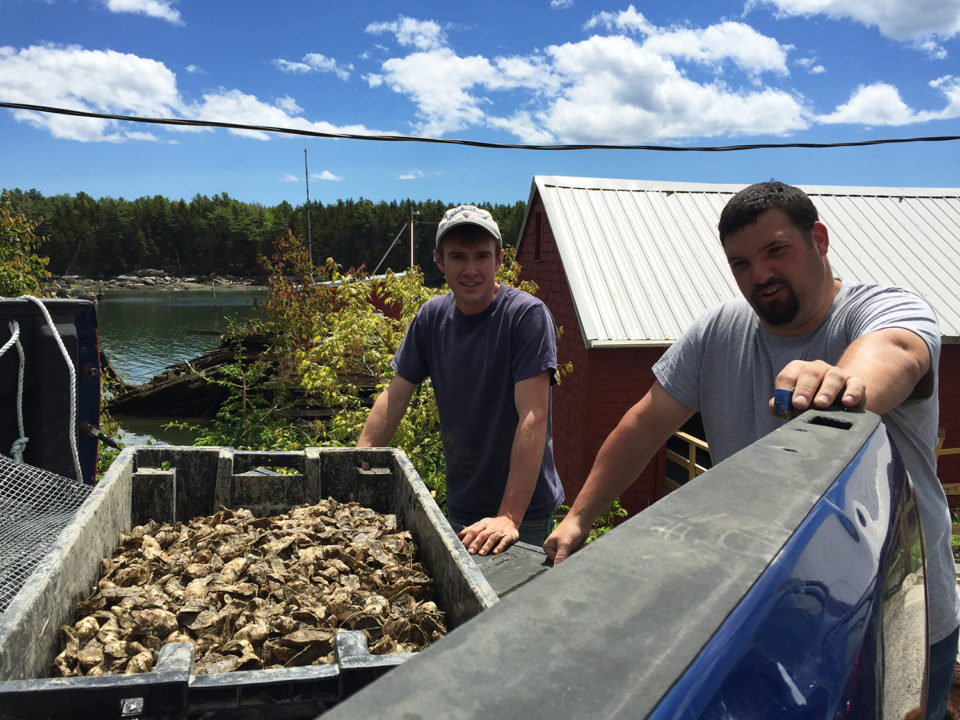
Jeff Putnam didn’t set out to become an oyster farmer. He is a lobsterman. It’s his family business, the one he learned from his father and his uncles as a kid in the 1990s. Today, he has his own boat – the Queen B., named after his ship’s captain wife – and a lobster business on Maine’s Chebeague Island, not far from Portland.
He also dabbles in aquaculture.
Putnam first began considering shellfish farming three years ago, when the long-term prospects of lobster fishing made him anxious. As a guy in his late-30s with all his resources tied up in one fishery, he wanted to diversify. But wading into other fisheries and their permit costs, catch restrictions, or other regulations made any such moves prohibitive.
He then stumbled upon some local guys farming oysters and saw an opportunity. He filled out an application to start an oyster farm but let it sit on his desk for a year. The process seemed onerous, until a class in aquaculture from Maine’s Island Institute taught him everything he’d need to know – the essential equipment, how to complete the application, and how to find startup funding.
I like to keep an eye toward the future, and the way things are in fishing, it’s constantly changing, and you don’t know what’s coming at you from year to year.
According to the Maine SeaGrant Institute, a starter-sized oyster farm with roughly 25 oyster bags (for a working inventory of roughly 5,000 oysters) would require approximately a $700 investment in equipment, seed and permitting. Putnam subsequently started his farm in 2015 with seed for 120,000 oysters.
His goals aren’t lofty: He wants to see if he can successfully grow oysters in the time he has between fishing, raising a family and doing volunteer work around the island.
“If I can prove to myself that I can grow oysters, first of all, and then make a profit at some point, then I’ll say it would be a win,” he said. “At that point I could decide to scale up.”
Putnam is also hoping to create a legacy.
“I have three young boys, all under the age of 10, and it’s something that they are able to now see as another way to make a living on the water around Casco Bay, besides lobstering,” said Putnam. “I hope it’s a way for my kids, and other kids, to be able to stay on the coast of Maine and make a living in the future.”
He’ll know whether his investment was worth it when he harvests first crop next summer.
With any wild-caught thing, you’re at the mercy of what nature will give you.
Tad Miller, another longtime lobsterman and fisherman out of Tenant’s Harbor, began growing scallops a few years ago. For now, he’s just getting dabbling in the business – he set spat bags along with some others in his co-op this past winter – but if it pans out he will likely increase efforts.
“I like to keep an eye toward the future, and the way things are in fishing, it’s constantly changing, and you don’t know what’s coming at you from year to year,” said Miller. “From a business end of things, it makes good sense to try and diversify as much as you can. We’re pretty heavily slanted toward lobstering these days, and if lobstering goes, it’s not going to be good for the state economy.”
Nor will it be good for Miller’s personal economy. Watching Japan and Canada both initiate a scallop boom made him think the species was a resource with potential. Plus, as is being done in much of Japan, Maine ocean farmers have begun hanging scallops on lines and in lantern pots, roughly 10-feet into the water stream, a practice that does less damage to the ocean floor.
Across Muscongus Bay, in Bremen, Boe Marsh has been redeveloping the Bremen Lobster Pound co-op with an eye toward making it more aquaculture-friendly, and help fishing families weather more storms.
“With any wild fishery you have a certain amount of volatility, in terms of production,” said Marsh. “With lobsters, you can have a good year, and then a bad year. Shrimp, you have five good years and then there’s no season for three years. With any wild-caught thing, you’re at the mercy of what nature will give you.”
All of which makes for high volatility in the earnings of families who make their lives along that waterfront.
“It makes life hard, and being a fisherman more and more difficult, especially as the fisheries undergo a bit more strain than they have over the last few years,” said Marsh.
In hopes of helping more people diversify and incorporate aquaculture into their business plans, Marsh is redeveloping the waterfront with refrigeration facilities, moorings, a stone dock for picking up more than just wild catches, and even sales and marketing services. It’s all designed to give fishermen who are transitioning into aquaculture the infrastructure they need to get started.
Also within the co-op’s waterfront area are two retired lobster pounds, covering 2.5 acres, which Marsh recently began filling with oysters.
The lobster pounds once served as holding tanks for soft-shell lobsters while they were readied for harvest and while lobstermen often waited out market price corrections. With an increase in the price of forage fish like herring, which are used as lobster bait and to feed impounded lobsters while they grow, and shrinkage as high as 15 percent, lobster pounds became unprofitable for some. Plus, new land-based tank technology made it possible to confine lobsters and drop the temperature so low as to send the lobster into hibernation mode. There they continue to grow without needing to be fed.
It makes life hard, and being a fisherman more and more difficult, especially as the fisheries undergo a bit more strain than they have over the last few years.
Marsh saw the potential in these retired pounds. They’re secure from even two-legged predators. They face south into the sun and drain out so water temperatures regularly hover above 68 degrees. And they fill up nicely with water rich in phytoplankton – all elements that let oysters thrive.
In May, Marsh filled the pounds with 135,000 oysters – some seed, some juveniles – many of which have already doubled in size. He expects his first harvest next summer, with the remainder coming in the typical two- to three-year timeframe. Marsh is also updating the pounds with sluices and more. Once renovations are complete, he expects to be able to raise between 650,000 and 900,000 oysters on the 2.5 acres.
The income potential is clearly there. According to Maine’s Horn Point Oyster Hatchery, oyster seed costs between $7.50 and $17.00 per thousand, and the going rate for those oysters ranges between 50 and 75 cents per oyster, which makes these pounds seem more then promising.
Moreover, if Marsh’s vision pens out, it could signal the future for other, similar sites along the coast: In all, he estimates are roughly 50 retired lobster pounds along the coast Maine just waiting to be filled with a new source of shellfish revenue.
Author
-
Julie H. Case
Julie H. Case writes about travel, wine, food, science, mushrooms and more. Her work has appeared everywhere from Alaska Airlines Magazine to Wired.
Related Posts
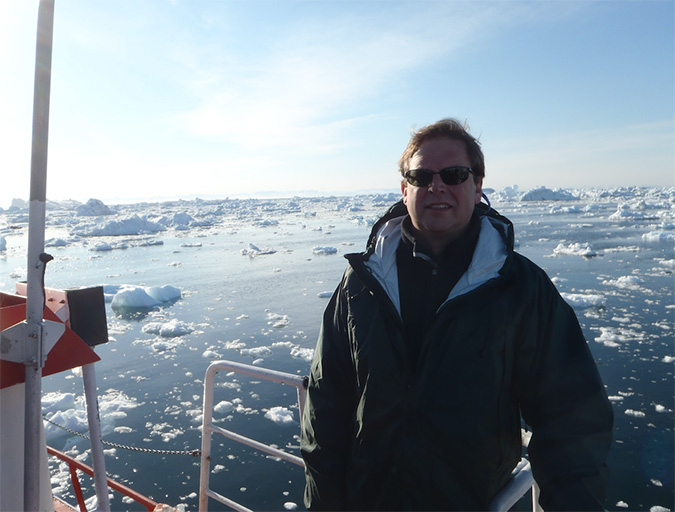
Innovation & Investment
Aquaculture Exchange: Sebastian Belle
The executive director of the Maine Aquaculture Association talks to the Advocate about the diverse and growing industry in his state (oysters, mussels, kelp, eels and salmon) and how aquaculture should be used as a rural development tool.
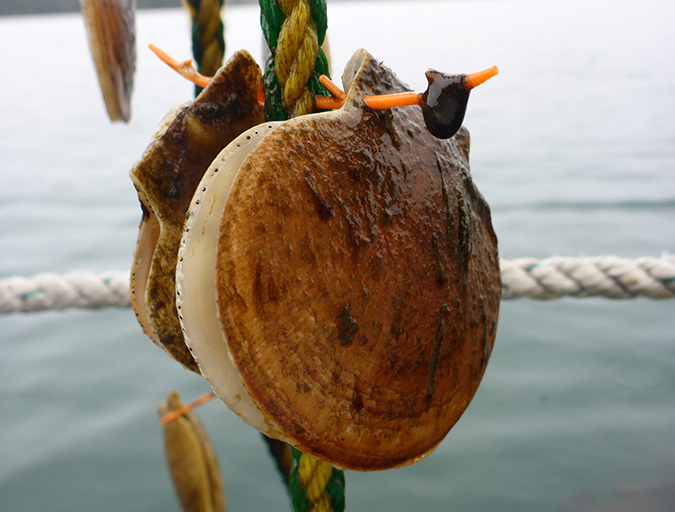
Innovation & Investment
Maine scallop farmers get the hang of Japanese technique
Thanks in part to a unique “sister state” relationship that Maine shares with Aomori Prefecture, a scallop farming technique and related equipment developed in Japan are headed to the United States. Using the equipment could save growers time and money and could signal the birth of a new industry.
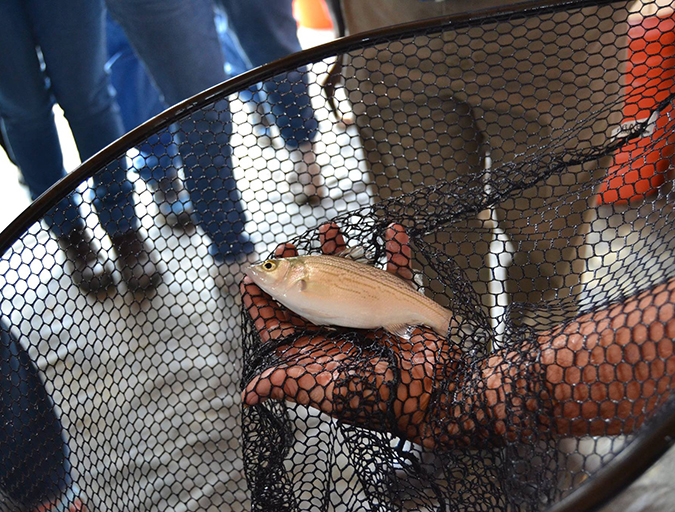
Intelligence
Young aquaponics, aquaculture company gets big boost
Fluid Farms, an aquaponics produce grower in Maine, leans on multi-trophic aquaculture to provide nutrients for its plants. The company is now selling its hybrid striped bass to the local market and, armed with a $50,000 innovation prize that will fund a new heating system, is expanding its horizons.
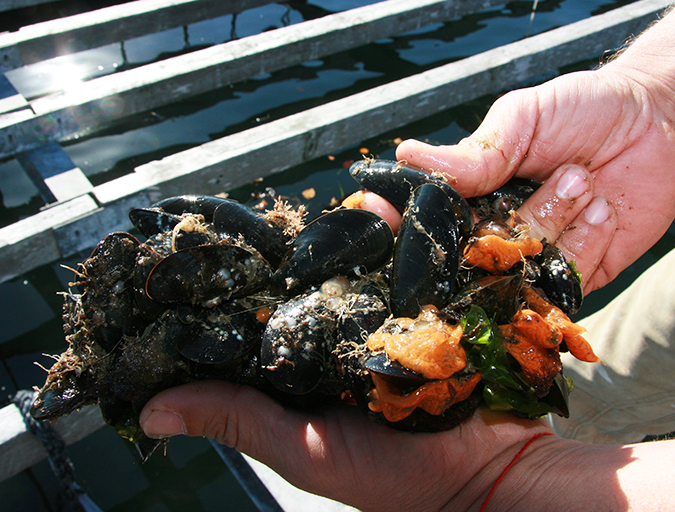
Intelligence
Images: Bangs Island Mussels in Casco Bay, Maine
This photo slideshow offers a close-up look at what restaurants in Maine and beyond are raving about: Bangs Island Mussels. Six years after purchasing the company from its founder, Matt Moretti says the niche shellfish supplier has expanded its production and market distribution.


